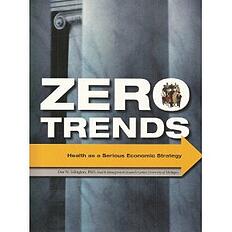If you follow employee wellness, you may have heard recently that wellness programs at worst are largely ineffective and tend not to be worth the investment, and at best take years to produce results. That commentary found in a Wall Street Journal Health Blog was the assessment on a report produced by the National Institute for Health Care Reform (NIHCR), which was based on research conducted by the Center for Studying Health System Change.
The basic premise was this: If you can’t do wellness right, you should probably stay out of the game. It’s expensive, it’s confusing, and ROI is questionable. It’s true that the best and most robust programs cost money and require a well-developed strategy along with clear and vocal leadership support. These things are not easily gained. It’s also true that ROI is extremely hard to capture in wellness programs. Anyone who tells you otherwise is not to be trusted.
 There is, however, another way to look at employee health and wellness: Something really is better than nothing. In his book Zero Trends: Health as a Serious Economic Strategy, Dr. Dee Edington outlines the “Five Pillars of Health Management Strategy,” which are consistent with the NIHCR report. But he also points clearly and repeatedly to the value of stopping the current unhealthy trends—of not letting things get any worse.
There is, however, another way to look at employee health and wellness: Something really is better than nothing. In his book Zero Trends: Health as a Serious Economic Strategy, Dr. Dee Edington outlines the “Five Pillars of Health Management Strategy,” which are consistent with the NIHCR report. But he also points clearly and repeatedly to the value of stopping the current unhealthy trends—of not letting things get any worse.
Under the “don’t get any worse” banner, consider the potential value of a simple regular blood-pressure screening at the worksite. If one employee is flagged for high blood pressure during that screening, and he follows up accordingly with his doctor, your organization will bear some of the medical expense associated with his ongoing treatment of high blood pressure. You may have also just saved your organization a lot of money in catastrophic health care costs associated with chronically unmanaged high blood pressure. You’ve also created awareness for that employee that may lead to self-management efforts to improve his health.
Small businesses can enter the employee wellness program arena, and they don’t have to do it with the all the bells and whistles that the big businesses bring in, as evidenced by this Business News Daily report.
Where will you begin with employee wellness?
